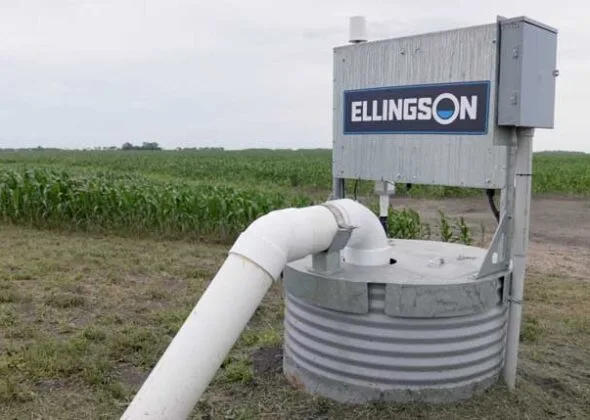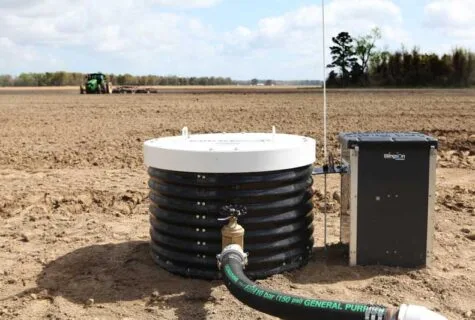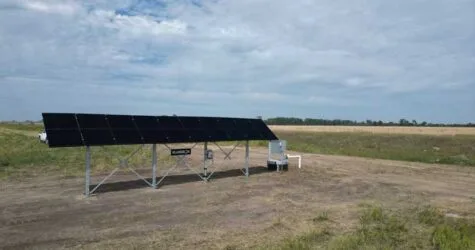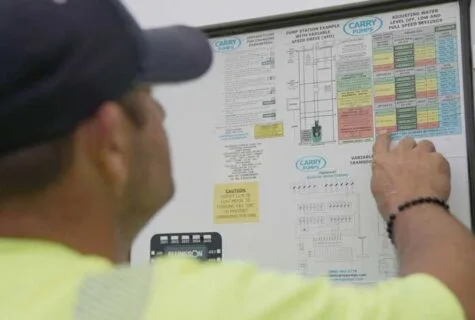Agriculture Lift Stations and Pump Solutions
Ellingson offers turnkey and customizable Agriculture Lift Station and Pump Solutions you can count on time and time again – giving you high-volume capabilities and maximum flexibility. From remote monitoring to pump controls, we also offer a variety of accessories, so you can customize a system to meet your exact needs.
Advantages of choosing Ellingson include:
Strong Warranty Protection
We offer a workmanship warranty and extended warranty options.
Customized Solutions
We work closely with customers to understand your requirements and design solutions to meet your needs. Custom options include pumps, wet wells, controls, and accessories.
Turnkey Services
We oversee the entire process from design to installation and provide ongoing service and support.
In-House Manufacturing
Our state-of-the-art production facility allows us to fabricate custom wet wells and other components. Maintaining tight control over manufacturing ensures consistent quality in our lift station solutions.
Dedicated Staff
We have dedicated in-house staff whose extensive experience and knowledge in designing, building, and monitoring pumps and lift stations are unmatched.
Understanding Lift Stations in Agriculture
Lift stations, also known as pump stations, include wet wells, pumps, valves, and controls. The damp well collects the water, while submersible or above-ground pumps lift the water through a pressurized pipeline to a higher outlet elevation.
Lift stations allow water to be transported across land without relying solely on gravity flow in pipelines. They eliminate the need for excessive trench excavations to maintain gravity drainage, significantly reducing installation costs.

For agricultural applications, lift stations are typically automatic, starting and stopping pump operation in response to water levels in the wet well. This allows unattended operation while maintaining control over water table levels in farm fields.

Critical Components of Agriculture Lift Stations
Agriculture lift stations have several essential components engineered to handle high flow rates and reliable operation.
Pumps
The pump style and size determine the flow rate and pumping head (pressure) produced. Submersible pumps are commonly used in agriculture for their durability, efficiency, and ease of installation. We offer many pump sizes and options to match specific requirements.
Wet Well
The wet well is the collection point that stores the water before it is pumped out. We custom-fabricate wet wells to meet size and layout requirements.
Inlet Piping
Inlets allow water to flow into the wet well. Inlets must be designed to avoid air locking of the pump while preventing excess turbulence. Multiple inlets are often used to collect water from different directions.
Power Source Options
We offer multiple power source options dependent on your needs – standard electrical, solar, and generator.
Accessories
Accessories include items like valves, meters, sensors, and hardware. We select accessories suited for each application to control flows, monitor performance, and simplify operation & maintenance.
Benefits of Agriculture Lift Stations
Installing an adequately designed lift station offers many benefits that work in conjunction with drain tile:
Improved Efficiency: Lift stations allow flexibility in drainage layouts for maximum efficiency. Optimal tile depths and grades can be achieved.
Increased Yields: Improved drainage and irrigation increase crop yields through better root development and soil conditions.

Water Conservation: Lift stations allow drainage water reuse for irrigation, reducing overall water needs.
Reliability: Our sturdy lift stations operate reliably with minimal supervision or maintenance for peace of mind.
Labor Savings: Automatic operation reduces manual oversight. Remote monitoring further simplifies management.
With Ellingson’s lift station design and fabrication expertise, we build solutions to help you achieve these key benefits.
Solar Lift Stations
In some cases, using solar power will be the most optimal solution to power a lift station. Solar energy, derived from UV light captured by solar panels, is converted into DC power. To power our pumps effectively, this DC power undergoes inversion to AC. Many factors come into play, such as geographic location, time the lift station needs to run, how many solar panels are required, and real-estate availability for installation.


Planning Your Lift Station Project
As your turnkey provider, Ellingson manages all aspects of system deployment from procurement through installation and commissioning. Our project managers coordinate contractors, staging, and construction sequencing for smooth installation.
Consultation and Assessment
We start by thoroughly analyzing your water management goals and constraints.
This includes factors like:
- Land terrain and drainage paths
- Soil conditions
- Crops and irrigation methods
- Water sources
- Regulatory requirements
With a firm understanding of your existing infrastructure and future objectives, we advise on the system layout and equipment selection.
Training & Support
We offer training on proper operation and maintenance procedures for the lift station. After installation, our service team is available to troubleshoot any issues that may arise. We aim to provide full-lifecycle support from concept to completion.
Contact us to learn more
Have a question? Need an estimate or more detail on our services?
Or just want a call-back? Let’s get in touch.